|
|
|
Those known to have served at RAF Wick during the Second World War 1939-1945. - Alvey Raymond Henry. Sgt. (d.22nd Nov 1942)
- Alvey Raymond Henry. Sgt. (d.22nd Nov 1942)
- Best Robert.
- Brown Thomas. Sgt.
- Butler Murray Anderson. P/O. (d.21st June 1940)
- Carter . LAC.
- Carter Lesley. LAC.
- Fawcett Robert. Sgt.
- Finfer Leslie Maurice. Sgt. (d.28th August 1943)
- Holmes K.G..
- Holmes Winifred.
- Hornell VC. David Ernest. F/Lt. (d.24 June 1944)
- Hunt Clifford Dennis. P/O. (d.5th June 1942)
- Hunter Douglas Chisholm. Pilot Officer (d.7th Jan 1942)
- Kinden Richard Frederick. Captain
- King Edward.
- Langley John.
- Macqueen DFC.. Norman Carter. F/Lt. (d.4th May 1942)
- Marwood Douglas.
- Reich Douglas Gordon. Flt.Lt.
- Ritchie Owen Fitzroy.
- Rusher Francis James.
- Shaw Lawrence. F/Lt.
- Walker David F. . F/Lt.
- Wright Alan. LAC.
- Wyche . Frank. W/O
The names on this list have been submitted by relatives, friends, neighbours and others who wish to remember them, if you have any names to add or any recollections or photos of those listed,
please
Add a Name to this List
|
|
|
The Wartime Memories Project is the original WW1 and WW2 commemoration website.
Announcements
- The Wartime Memories Project has been running for 24 years. If you would like to support us, a donation, no matter how small, would be much appreciated, annually we need to raise enough funds to pay for our web hosting and admin or this site will vanish from the web.
- 22nd April 2024 - Please note we currently have a huge backlog of submitted material, our volunteers are working through this as quickly as possible and all names, stories and photos will be added to the site. If you have already submitted a story to the site and your UID reference number is higher than 263973 your information is still in the queue, please do not resubmit, we are working through them as quickly as possible.
- Looking for help with Family History Research?
Please read our Family History FAQ's
- The free to access section of The Wartime Memories Project website is run by volunteers and funded by donations from our visitors. If the information here has been helpful or you have enjoyed reaching the stories please conside making a donation, no matter how small, would be much appreciated, annually we need to raise enough funds to pay for our web hosting or this site will vanish from the web.
If you enjoy this site
please consider making a donation.
Want to find out more about your relative's service? Want to know what life was like during the War? Our
Library contains an ever growing number diary entries, personal letters and other documents, most transcribed into plain text. |
|
We are now on Facebook. Like this page to receive our updates.
If you have a general question please post it on our Facebook page.
Wanted: Digital copies of Group photographs, Scrapbooks, Autograph books, photo albums, newspaper clippings, letters, postcards and ephemera relating to WW2. We would like to obtain digital copies of any documents or photographs relating to WW2 you may have at home. If you have any unwanted
photographs, documents or items from the First or Second World War, please do not destroy them.
The Wartime Memories Project will give them a good home and ensure that they are used for educational purposes. Please get in touch for the postal address, do not sent them to our PO Box as packages are not accepted.
World War 1 One ww1 wwII second 1939 1945 battalion
Did you know? We also have a section on The Great War. and a
Timecapsule to preserve stories from other conflicts for future generations.
|
|
Want to know more about RAF Wick? There are:49 items tagged RAF Wick available in our Library There are:49 items tagged RAF Wick available in our Library 
These include information on officers, regimental histories, letters, diary entries, personal accounts and information about actions during the Second World War. |
|
K.G. Holmes H.M.S. Warwick These are memories of Ord Telegraphist K.G.Holmes, D/JX 340570, aged 20 years, on board H.M.S.Warwick on Sunday 20th February 1944.
I was in my mess at about 11:45 am when an explosion shook the ship violently and a cloud of dust fell from the overhead pipes that ran through the mess. My first thoughts were to get my lifebelt and head for the upper deck. My lifebelt, which was the type that had to be blown up like a car innertube, was rolled up and hung on a hammock hook near the door. I grabbed the lifebelt and headed for the door. The mess was on the starboard side of the ship. The only access to it was by a ladder that led upwards to a hatch which opened out onto the upperdeck aft of the forward superstructure. This ladder also served the ERA's mess which was on the port side of the ship. I was first to the doorway of my mess but was beaten to the ladder by one of the ERA's. On looking up I could see some burning wreckage across the hatch top. The ERA.(I don't know his name) went ahead of me and either he or someone on the upperdeck cleared the wreckage away. I proceeded on to the upperdeck to find oil, some of it burning, on the deck and seemingly spurting up somewhere near the funnel.The wireless office was at the rear of the forward superstructure. As I came on to the upperdeck I saw the P.O.Tel,who was my boss,shouting for people to go to their action stations. My action station was in the HF/DF office in the stern of the ship,and when I looked in that direction I could see that the stern was no longer there. I was actually standing on the port side of the ship by the whaler and efforts were being made to lower it. Unfortunately burning oil had dropped into it, and it was obvious that it would not float when it got into the water. I had by this time donned my lifebelt and was in the process of blowing it up when seeing that the whaler was useless, I moved over to the starboard side where efforts were being made to lower the motor-boat. This was also proving to be fruitless as it appeared that the lowering gear was jammed. I was standing next to a P.O. who said, if I remember correctly, that it was the third time this had happened to him! As he said this the ship heeled over to port and I grabbed for the wire handrail that went round the ship. I was fortunate as I got hold of it but some of the others waiting by the rail didn't, and they slid down the oily deck out of my sight. I climbed over the rail and onto the side of the ship which was now almost level,slid down it, and jumped off the the bottom of the ship into the water. I was fully dressed in overalls and boots, but my lifebelt was inflated. I remembered that during my training I had been told that if such an emergency happened to me, I should hold my lifebelt down to prevent it striking me under the chin as I hit the water. This I did and I arrived in the water amid a flurry of arms and legs belonging to the others who had jumped with me. The water was icy cold and came as a bit of a shock, but my first thoughts were to swim away from the ship before she sank and pulled me down with the suction. There was a heavy swell on the sea. I found that I would go up on one rise and then down, but I didn't come up quick enough before the next rise and consequently that one came over my head. So half the time I was in the water, I seemed to be underwater as well. The oil which covered the top of the water was also a problem because I had to make sure that it didn't get into my eyes. At first I could hear men shouting, but from the time I jumped into the water I never saw another soul. For all I knew I could have been the only survivor. Having swam away from the ship as far as I thought safe, I turned to look behind me. The bows of the Warwick were still above water and I could see a man sitting on the capstan on the forecastle. Who he was I didn't know. I was treading water or doing a bit of breast stroke whilst I looked around to see if any help was in view, and I saw a destroyer heading our way. I began swimming towards it and I could see some of the crew lowering scrambling nets down the side. Then, just when I thought I was going to be saved, the destroyer sped away from me. To make matters worse, a few minutes later she started dropping depth charges. Although I was a good distance from her, as each one exploded, it was like being punched in the stomach. I swam away to increase my distance from the explosions. After some time(I don't know how long),still not having seen any other person in the water or the Carley floats which I later found had been launched, I sighted, on one of my upliftings on the swell, what appeared to be three boats heading in my direction. I started to swim towards them. At first I thought I had done too well as it appeared that I was going to be run down by one of them, but I adjusted my direction and found myself alongside one of them. I raised myself up in the water and shouted. There seemed to be no one on deck, but as I shouted, a man came out of the deckhouse. How he saw me I don't know as the water was covered with oil and so was I. He did see me though and he threw me a rope. I grabbed it gratefully and was dismayed to find that because of the oil it was sliding out of my hands. I promptly took a turn around my wrists and hung on. My saviour must have been a very strong man because he hauled me up the side of the ship with no help from me and threw me on to the deck. He said something to me in a language that I didn't understand and for a few moments I thought I was going to end up in a prison camp! He realised that I didn't understand and then in English told me to go down below.I went down into a cabin with a roaring stove blazing in it and began stripping of my clothes.I couldn't do anything with my boots which were of course wet through, so a man came down and cut them off for me. At that time there was no one else in the cabin and I stood over the blazing stove and was unable to feel the heat.I felt so exhausted that I got into a bunk and must have blacked out because I don't remember anything more until I was awakened by another survivor getting into the bunk still in his wet and cold clothes! This was quite a shock as I was in the nude and had just started to get warm. I looked around and saw that there were a number of the Warwick's crew aboard but they were unrecognisable to me as they were covered in oil. I understand that by this time we were on our way to Padstow, but I had lost all track of time and I have no idea how long it took us. On arriving at Padstow a member of the fishing vessel's crew gave me a pair of old trousers and an old blanket to go ashore in. I climbed up the ladder onto dry land and then realised how lucky I had been to still be alive. I owed grateful thanks to the man who had hauled me up the side of his ship. It appeared that most of the survivors had been landed by this time,and we were directed to get into a lorry which was standing by and were transported to the R.N.A.S. at St.Merryn. We were greeted by a P.O. with a basin full of navy rum and given a cup full! It was only after that when I began to feel human again! We were fed, kitted out in battledress, and given a bed for the night before being transported to the R.N.B. at Plymouth. There we went through the joining routine,were issued with a new kit and eventually sent on survivors leave.
|
Edward "Ginger" King 48 Squadron I was a Wireless Operator/Air Gunner on Ansons flying Coastal Command out of Wick. I married WAAF Winifred Holmes, ambulance driver and chief's car driver. Does anyone know me, Win or of the whereabouts of Bob Best?
|
W/O Frank Wyche 269 Squadron My Father, Frank Wyche was in the RAF and based in Wick and Reykjavik during 1941 to 1944. He was an Air Observer and Navigator. He developed TB in Iceland and was sent back to England. He died in 1946, when I was less than 2 years old. There are no family left to tell me anything about his time in the war, so I am hoping that someone will read this and be able to tell me what the RAF were doing there at this time.
|
Pilot Officer Douglas Chisholm "Pym" Hunter 48 Squadron (d.7th Jan 1942) My uncle Douglas Chisholm Hunter was based in Wick with 48 Squadron. He was killed in action and my grandmother (who lost two brothers killed in action in WW1) thought that Douglas had been killed on a bombing raid over Bergen, Norway. As my father, his brother, died in 1956 and their sister died in 2006 I am now trying to find out as much as I can about Douglas. He went to Highgate School in North London. I have a few pictures of him as a young boy but nothing else.
|
Captain Richard Frederick Kinden Royal Warwicks/East Surreys POW transferred from Italy, having been taken prisoner in North Africa at Fort McGregor. Claims to have ended up in Offlag 79 but we can find no record of him there. Still alive and, though in failing health, wishes to clarify the records. Joanna McMahon nee Kinden
|
Francis James Rusher Royal Warwickshire Regiment I am trying to trace anyone who knew my grandad, Francis Rusher or knows what happened to him after the war. After years of searching for a dead person, as that is what my nan had always told my dad, I have recently found out that he was a prisoner of war at Stalag 357 A/5 in Oerbke, Lower Saxony. He was liberated, so we now know he did not actually die during the war. We would like any information regarding him as we do not know his age, where he came from etc. His prisoner of war number was 84063. I would be grateful of any information, no matter how small or large.
|
LAC. Lesley Carter 540 Squadron. My brother, 921542 L.A.C. Lesley Carter, served with 540 Squadron at Wick. Before he passed on he told me he was attached to a section commanded by the son of the owner of Ilford Film Co. which consisted of two Spitfires that were stripped down fitted with extra fuel tanks and a camera, he told me the Germans had nothing to touch them. He also said the Ilford Company petitioned for these special planes but were refused as production for fighters had priority so the the film company bought and paid for the equipment needed.
I am searching for other photographs of this period at Wick that I know exists. The reason I am sending these photographs is because there is no mention of Spitfires flying from that station and there must be many who would have personal photographs of this small group of men.
|
Flt.Lt. Douglas Gordon Reich Photographic 2 Operational Squadron Douglas Reich was a 17-year-old lad from Worsley, Manchester when war was declared. After volunteering for the RAF at 18, he was sailing on the Liberty Ship “The George F Eliott” in March 1942 when it was diverted to New York to avoid U. Boat attacks, so he took the train to Montreal.
He was posted to No 5 Elementary Flying Training School at Windsor Mills, Flying Fleet Finch Mk. 2. After 5 hours and 20 minutes duel instruction, he took his first solo flight and finished the course with 65 hours flying time. He was then posted to No 13 Service Flying Training School at St Huberts, 100 miles from Montreal, to fly Harvards. After 2 weeks, his instructor was badly injured and his pupil killed, so he got a new instructor F/O Thompson. Towards the end of the course, Reich belly landed the plane after the engine caught fire, but finished the course and was awarded his commission.
He returned from Canada in December 1942 with 220 hours flying time and then went to Tern Hill, Shropshire, England on refresher courses flying Miles Master and Kestrels.
In 1943 he went to an operational training unit at Hawarden, North Wales, to fly Mustang Mk I, - single seater fighter planes - and in May, was posted to No 2 Operational Squadron, an Army co-op squadron, at Sawbridgeworth, Hertfordshire, to fly low-level photography reconnaissance missions.
He photographed the French coast before D-Day, VI rocket sites and Pegasus bridge in Normandy to see if it could carry Allied tanks.
On June 15th 1944, at 08.00hrs he was briefed to lead a section to attack the ferry boats that were taking German troops across the River Seine. The ferry was allowing them to get to the beachhead much quicker than by road.
He took off from Gatwick Aerodrome about 8.40am to attack the ferry boats transporting troops across the River Seine. At a place called Caudebec, he saw a ferry on the bank and blasted it with his four 20mm cannons. He pulled up, turned and fired on another ferry on the opposite bank then turned back over the river. Doing well over 300mph and flying very low, he crashed in to the Seine at Caudebec.
He floated in the river for 5 hours before being picked up unconscious by a French fishing boat crew who handed him over to the Germans. Regaining consciousness in a French cottage hospital about 10 hours later, he awoke as a Prisoner of War. It was a miracle he survived with only bruising, concussion and a broken ankle, although he had also burst all the blood vessels in his eyes!
This is due to the fact that he had given his ‘Mae West’ inflatable lifejacket a few lungfuls of air before take-off. He had done this in case a crash ever burned his hands and he couldn’t hold and blow into his mouthpiece while in water. But the crash’s cause remains a mystery.
Says Doug: “The only thing I can think of is that I’d been flying too low, put a wing tip in the water and cartwheeled in.”
He spent weeks in hospitals and was interrogated in Frankfurt where his Scottish name had sparked confusion.
“When I was being interrogated in Frankfurt beforehand, the interrogator looked at my name, blue eyes and fair hair and thought I was German. I said ‘I am not! All my relatives come from the Glamis area of Scotland.’ Reich was probably misspelt in the 1700s.”
He was sent to Stalag Luft I in July 1944 on Germany’s Baltic coast at a small town named Barth, near to Stettin where he spent the last 11 months of the war. Its sister camp, Stalag Luft III, inspired the Great Escape film, although no one escaped from Doug’s camp while he was there.
Conditions in the camp were tough but inmates got Red Cross parcels from Britain and the US to stave off starvation. Under captivity, however, he did develop acute appendicitis. A fellow POW and doctor removed the organ by torchlight during an air raid.
Doug survived and prisoners learnt about the end of the war by listening to a secret hidden radio in the camp hospital. In May, 1945, Stalag Luft I was liberated by the Russians. The mood, of course, brightened with unexpected perks. He said: “A day or so later, a Russian Colonel visited our camp and decided we needed some fresh meat. So he sent a very drunk soldier who drove a herd of cows through our gate. It was very funny.”
On May 13, 1945, a fleet of American Flying Fortresses evacuated all RAF personnel. Doug returned to England left the RAF in 1946 and got a job as a newspaper photo engraver in Manchester. He married Sheila in 1948 and had a son and a daughter and currently (2009) have three grandchildren and a great grandchild.
|
John Langley 630 Squadron Part of a letter written by John Langley in May 2008.
I have been reliving old memories and I can’t get them out of my mind. First of all, I have landed at both Manston and Gatwick and for the life of me I cannot understand why Gatwick was developed rather than Manston.
When I touched down at Gatwick, it was a grass field, ie NO runways, whereas Manston had a huge runway which was so wide that when I took off using the left hand side of the runway a squadron of Spitfires was doing a formation landing on the same runway at the same time. Admittedly I did not like it, but it illustrates the size of the runway.
Additionally, the place is, in my opinion, much better suited than either Gatwick or Heathrow (another grassy field in those days), most particularly from the point of noise pollution, to say nothing of the fact that the circuit above Heathrow is over the most densely populated area of the country.
But the reason why Manston is the place I remember so well is this:
When I joined the squadron at East Kirkby, at first I had to fly whatever
aircraft was not being used by its "owner" as I had to wait until a new
plane was delivered (we were allocated an aircraft and the associated ground crew, but until one came there was always a crew on leave or, as happened to me, I was given the CO’s kite as of course he didn’t fly every op. When eventually I got my brand new Lancaster it was a Mark 2, the only one on the airfield. It differed from the Mark Ones by having Packard-built
Merlins with Stromberg carburettors, which unfortunately no one knew
anything about. As a result, it was very troublesome and eventually it was
"posted" to an OTU while I was on leave.
I was given the letter A Able, which was rather nice. By this time I had
flown about a dozen different lettered planes, including S Sugar, which was
the dual-controlled kite used for training and was universally detested as
being a real old crock. One day, we were told that come what may with the weather (awful), Churchill had insisted a raid must take place, regardless of the consequences. We were going to Munich and were routed over the Alps. When the time came to take off, the cloud base was under 500 feet, it was raining cats and dogs and to crown it all, the wind direction meant we had to use the shortest of the three runways. About two-thirds of the take-off run, when it was impossible to stop, one of the engines caught fire and the flight engineer stopped it, feathered the prop, and operated the fire extinguisher button. I managed to get airborne on the other three engines, but we were unable to get high enough to fly over the Alps and another engine was overheating, so I had to turn back.
The weather at East Kirkby was too bad for landing, so we made our way to the main emergency strip at Manston, where we landed safely. A van with the ‘follow me’ light led us to our parking place and after reporting the forced landing to the squadron, we went to bed.
Don’t have page 2 of the letter, but apparently, they got up next morning to the shock of a badly damaged Lanc where they’d parked theirs, before
realising it was another plane that had come in during the night.
|
Douglas Marwood 227 Sqd. My late father Douglas Marwood was a crew member of stricken a RAF Lancaster bomber PB649.K that crash landed at Wick early in the morning of 22nd December 1944. The aircraft was badly damaged and losing fuel after a raid on Politz. The aircraft was based at RAF Balderton, Nottingham and belonged to 227 Squadron. The aircraft was guided back to Wick by a Scottish female controller and the plane landed, narrowly missing a torpedo dump. The aircraft was a write-off with no fatalities.
The crew spent 5 days at Wick and had a very enjoyable Christmas. In the words of a New Zealander pilot Mervyn Croker: "we were treated at a bit of a novelty at Wick and thoroughly spoilt". I wonder has anyone any information about these unexpected Christmas guests?
The crew consisted of:
- Flying Officer M.R. Croker (NZ426913)
- Sgt. V Mitchell
- Flying Officer S.J. Pirt
- Flight Sgt. D Marwood
- Warrant Officer W.A. Henshaw (NZ181638)
- SGT. J.P. Wilcox
- Sgt. W.J Williams
|
F/Lt. David F. Walker 608 sqd The Norfolk cricketer David Walker who was stationed at R.A.F. Thornaby in 1941 6 OTU then 608 Squadron Early the following year he and 608 were transferred to Wick. He died early in 1942 when his plane was shot down off the Norwegian coast. He is buried in Trondhiem. If you have any information about his time at Thornaby or Wick, I would be most grateful.
|
Sgt. Robert Fawcett 220 Sqd My father, Sgt. Robert Fawcett, W/OP or T/Gun. with 220 Squadron, based at Thornaby,1940/41, was reported missing June 1941, flying out of Wick. My mother Margaret Dixon, and was originally from Halton, Lancs. I was born after Bob was lost, and would love to hear from anyone who may have come into contact with him during his service.
|
Sgt. Leslie Maurice Finfer 519 Sqn (d.28th August 1943) Maurice Finfer was my cousin. He volunteered for the RAF hoping to become a pilot. He duly did so going to Canada or pilot training. After passing out as a pilot he was assigned to bombers, something he apparently objected to. So, he was stripped of his pilots rate, and retrained as a navigator/gunner/radio operator.
He was then posted to 519 Sqn at Wick, Scotland. Where his duties included meteorological reporting and searching for enemy submarines and surface shipping over the North Sea up into the Arctic. They were flying very old and worn out Hampton mk3s. On the 28/08/43 he took off and was never seen again. There were several other losses around this time. If anyone has any further info on this please get in touch
|
LAC. Carter My brother served in the RAF between 1940-1948. His identity was No 921542, L.A.C. Carter and I understand that he serviced Spitfires for reconnaisance from Wick.
I possess a few photographs of him from this period and I would like to learn more of their activities.
|
Sgt. Raymond Henry Alvey 144 Sqdn. (d.22nd Nov 1942) 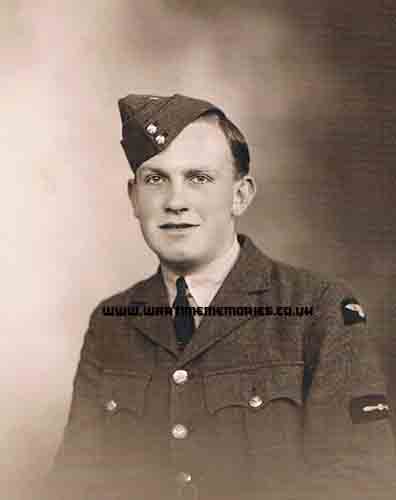 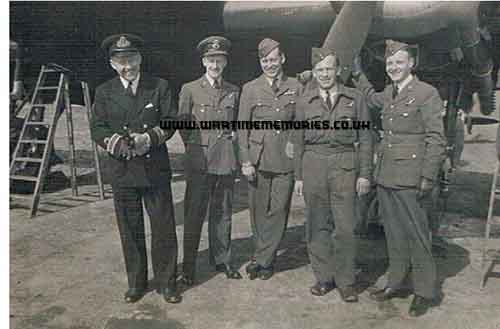 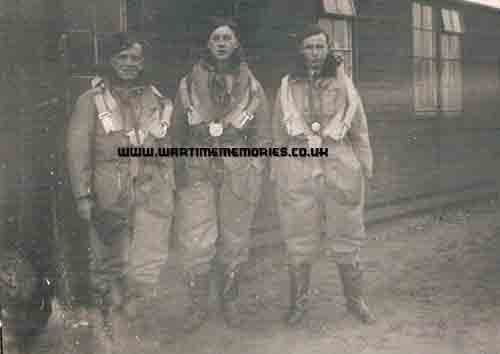 Raymond Alvey was my mother's younger brother. He was in the RAF Volunteer Reserve and was called up in September 1939. He served in Coastal Command with 120, 489 and 144 squadrons as a wireless operator/air gunner. He was on an operation over the Norwegian coast in a Handley Page Hampden, when he was shot down and reported 'missing believed killed in action'. Raymond's father (my grandfather) George Alvey spent a lot of time trying to find out the details but to no avail. Later research suggests that his body was probably recovered by the Germans and buried at sea, although this is not confirmed.
Raymond's fellow crew members were Sqn Ldr John Richard Darbyshire Hird, Sgt Davidson William Hepplewhite and Sgt Robert John Coles.
Raymond wrote detailed diaries of his three years of service. I also have his father's correspondence with the Air Ministry and Red Cross when he was trying to find out what had happened and where Raymond and the other crew members might have been buried. (It seems likely that they were buried at sea by the Germans). There is a commemorative plaque near the site of the crash and the crew are also commemorated at Runnymede.
I am intending to write a biography of my uncle, based on the above sources, operations record books etc, and would be pleased to receive any information that might be relevant. I would particularly like to hear from descendants of the other crew members, and from those who might have served in 144 squadron at RAF Leuchars in November 1942, or in 489 squadron earlier that year.
|
Sgt. Raymond Henry "Bill" Alvey 144 Squadron (d.22nd Nov 1942)    Raymond Alvey was my mother's brother. He served in Coastal Command, firstly with 120 Sqn, then with 489 Sqn and finally (and very briefly) with 144 Sqn. His final flight, on 22 November 1942, left RAF Wick for a nuisance bombing raid over the coast of Norway north of Stavanger. Their Hampden was shot down on Karmoy Island. All four crew were killed.
- The pilot was Sqn Ldr John Hird,
- the navigator/bomb aimer was Sgt Davidson Hepplewhite,
- and the wireless operator/air gunners were Sgt Robert Coles and my uncle.
Raymond Alvey wrote detailed diaries of his three years of service. I also have his father's correspondence with the Air Ministry and Red Cross when he was trying to find out what had happened and where Raymond and the other crew members might have been buried. (It seems likely that they were buried at sea by the Germans). There is a commemorative plaque near the site of the crash and the crew are also commemorated at Runnymede.
I am intending to write a biography of my uncle, based on the above sources, operations record books etc, and would be pleased to receive any information that might be relevant. I would particularly like to hear from descendants of the other crew members, and from those who might have served in 144 squadron at RAF Leuchars in November 1942, or in 489 squadron earlier that year.
|
P/O. Murray Anderson Butler 42 Squadron (d.21st June 1940) Pilot Officer (Navigator) Murray Butler was the son of Floyd Allison Butler and Isabelle Mignonette Butler of Newcastle, Ontario, Canada.
He was aged 27 when he died and is buried in the Hajaardemaal Churchyard in Denmark.
|
P/O. Clifford Dennis Hunt 607 Squadron (d.5th June 1942) Clifford Hunt was posted to Padgate Air Crew as a Pilot Under training, on the 12th of September 1939. On the 3rd of November 1939 he was posted to Wick, then on the 28th of December 1939 to 4 I.T.W., Hastings
by the end of the year his rank was A.C.2, Pilot U/T.
Clifford joined No.13 O.T.U. (Bomber Command)on the 20th of May 1940 and on the 10th of June was
posted to 50 Group (pool) then to 8 S.F.T.S. at RAF Montrose on the 10th of August 1940. He qualified as a pilot on the 26th of October 1940 and was posted to 56 O.T.U. (Fighter Command) on the 4th of November, transferring to
22 Squadron at North Coates, Lincolnshire on the 9th of December 1940, then to
607 Squadron at RAF Usworth, Durham on the 16th. On New Years eve 1940 he was promoted to
the Rank of Sgt. Pilot. His service record notes he held this rank when at
Skitten, Caithness with No. 607 Squadron on the 26th of May 1941. On the 26th of June 1941 he was
posted to No. 3 Squadron for Flying Duties at Stapleford Tawney in Essex, On the 18th of July 1941 he was granted a commission as Pilot Officer for duration of hostilities.
He joined No. 174 Squadron for Flying Duties at Manston in Kent, on the 10th of March 1942, this is confirmed in Cliff's diary entry for 10/3/1942, with the note that it was a Fighter Bomber Squadron. On the 8th of May 1942 he was promoted to Flight Commander (Flight Lieutenant) and on the 5th of June 1942 Clifford was killed on Active Service.
|
Owen Fitzroy Ritchie My Dad, Owen Ritchie volunteered for the RAF from Jamaica, W.I. He was one of the first black men to ever serve in Wick. He tells of fond and not so fond memories of Wick in 40's, but overall the experience made him a better man.
|
LAC. Alan Wright A Flight 489 Squadron 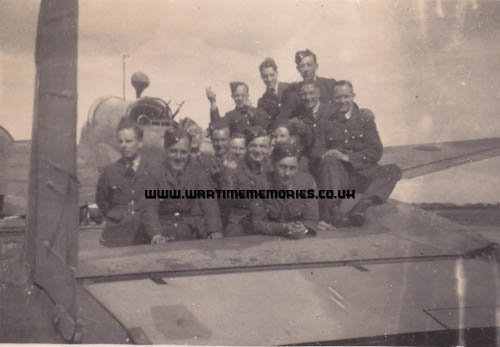 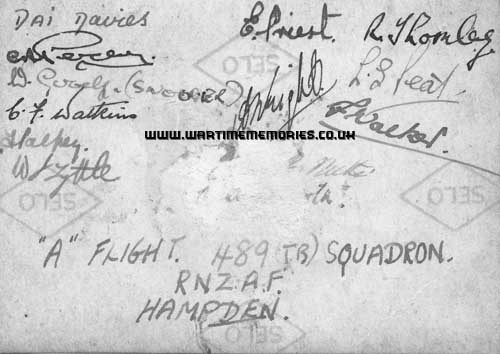 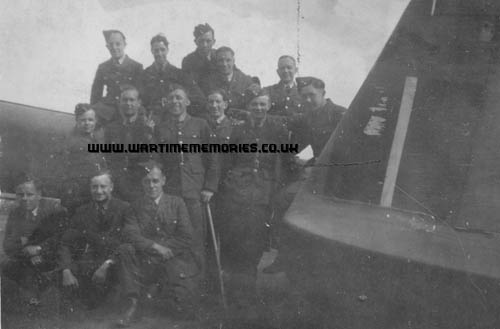 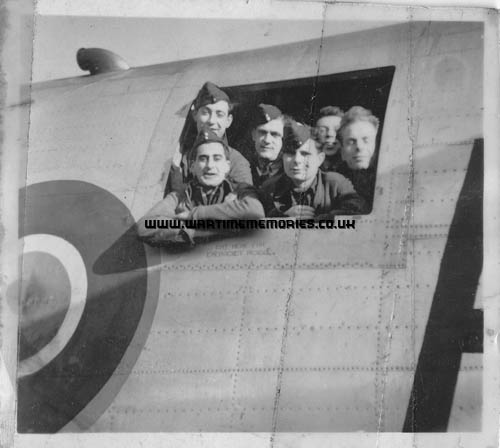 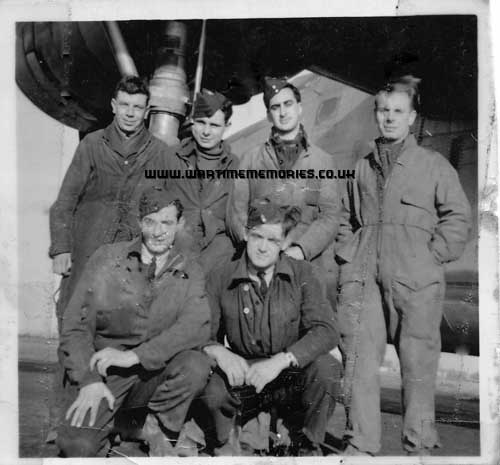 I have six wartime group photos of RAF/RNZAF aircrew. Four of these show airmen by or in Hampdens and think that these are all of 489 Squadron.
One group photograph includes members of A Flight 489 (TB) Squadron RNZAF taken (I think) in 1942-3. On it, as far as I can make out from the signatures on the reverse, are: S F Watkins, Halpey, Dai Davies, M Percey, W Coaey (Swooner), W Little, E Priest, R J Lombey, L S Peat, Alan Wright, F Walker and two others whose signatures are almost impossible to make out.
The aircraft is certainly a Hampden and certainly includes ground crew.
One of these ground crew members appears on the short film upload of crew approaching an aircraft in a truck, that has been uploaded onto the web. This may help date the photos more accurately. I know that the squadron had Hampdens between March 1942 and November 1943 that they switched to Beaufighters in November 1943 until August 1945.
Another of the other photos is of (what appears to be) all of 59 Army Cooperation Squadron (157 servicemen) and a Beaufighter.
The final group photo may be of newly qualified Aircraftsmen passing out in 1939.
I know that my father, Alan Wright, was stationed at Wick during the war (which may narrow the date down further March to 5 August 1942) but I cannot rule out that he may also have been stationed at Dallachy later in the War. He certainly talked about the base. I do know that he was transferred overseas to Ireland just as the squadron was starting to be issued with Beaufighters.
|
F/Lt. Norman Carter "Mack" Macqueen DFC. 249 Squadron (d.4th May 1942) 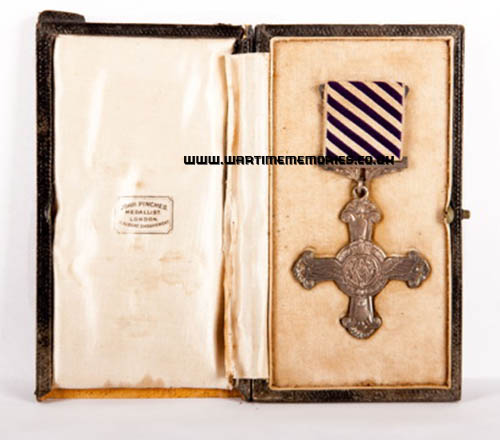 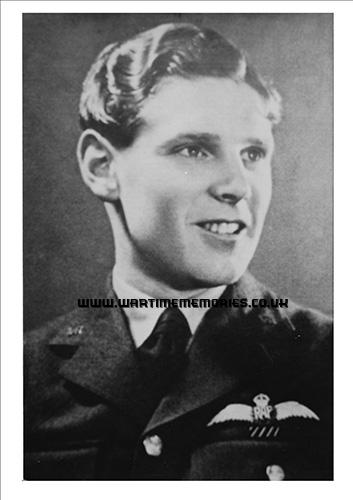 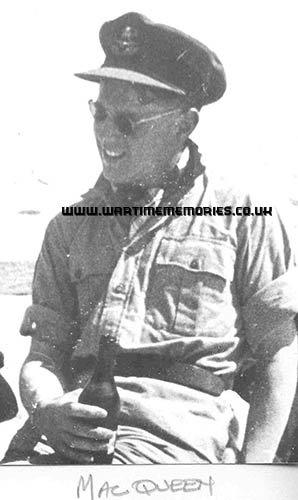 On 10th of September 1939, Norman Macqueen was at No 3 Depot at Padgate, near Warrington in Cheshire where he joined the service as an Aircraftman 2nd Class with other recruits. This was the commencement of his training programme which later that year took him to the north of Scotland at RAF Wick. His final posting was to Malta as a member of the famous 249 Squadron.
In December 1939, Norman joined the RAF Training Wing at Hastings and his first promotion came on 1st of January 1940 to Leading Aircraftman. By May 1940 he was at RAF Castle Bromwich (now Birmingham International Airport) and during October 1940 he was promoted to Sergeant as part of a transition to his Commission.
Norman was confirmed in appointment and promoted to the rank of Flying Officer with effect from 19th of October 19th 1940 but with seniority back-dated to 12th of October 1940. However, on 12th of November 1940, Norman was granted a Commission as a Pilot Officer in the GD Branch, Royal Air Force Volunteer Reserve for the duration of hostilities. As an officer, Norman was posted to 610 Squadron for two weeks before a further posting to 602 Squadron on 16th of December 1940. He was granted the paid Acting Rank of Flight Lieutenant on 16th of October 1941 and on 31st of January 1942 it was confirmed that Norman was to retain the rank of Acting Paid Flight Lieutenant and this coincided with his service at RAF Redhill in Surrey. It was during this period that Norman was selected for service overseas. His service record confirms his appointment to HQ Mediterranean as 9th of February 1942 and then to 249 Squadron on 8th of March 1942. At this time, 249 Squadron had been sent to Malta. The unit was based at RAF Ta Kali and it was to play a major role in the defence of the island against the German and Italian forces.
In February 1942 Squadron Leader Stan Turner arrived to take over 249 and he brought a lot of valuable experience of flying tactics with him. The first contingent of 15 Spitfires (Mk Vs) flew into Malta from the aircraft carrier HMS Eagle (Operation Spotter). Norman Macqueen was part of this operation. More Spitfires were to follow later to augment the number of aircraft, later combined military efforts from Malta were to wreak havoc on enemy shipping and vital supplies to German and Italian forces in North Africa, thus German advances in this theatre of war were frustrated thanks to Malta.
It was soon clear that his combat experience over the Channel was to pay dividends over the skies of Malta as a mainstay of the Squadron, he was a popular and well liked member of the team. He was certainly one of the most successful pilots in the early weeks of Spitfire operations on the island.
His first victory in Malta came on 14th of March 1942 with a Bf 109 destroyed over the island of Gozo. Later, during the month two more Messerschmitts followed to add to the score. In April, he destroyed three Ju 88s and shared a claim in the destruction of a Bf 109. On May 1st he was to claim another share in the destruction of another Bf 109, this victory was to take his tally to seven and two shared destroyed and four planes damaged. However, he was bounced by some Bf 109s from lll/JG53. One Bf 109 managed to dive through the Spitfires and pull up and fired a quick snap shot in the underside of Macqueen's Spitfire (BR226). It was reported that he faltered and in the event he continued to fly his aircraft almost all the way back to Ta Kali before nose diving into the ground just short of the runway. Radio contact had been lost with Mac and it was believed that the tracer fire in the attack had wounded him and as a result he had lost consciousness on the way back to Ta Kali.
The London Gazette dated 1st of May 1942 carried the announcement of the award of a DFC to Flt Lt Macqueen. His parents would have received a telegram from the War Office advising them of his death.
This officer carried out a large number of sorties over enemy-occupied territory and destroyed 1 enemy aircraft whilst based in this country. In the Middle East he has destroyed a further 4 hostile aircraft. Throughout his operational career, Flight Lieutenant Macqueen has rendered most valuable service. He has displayed great skill and leadership.
Norman Carter Macqueen was laid to rest in the Kalkara Cemetery which belonged to the Admiralty and he shares the grave with other RAF personnel. The cemetery contains many graves from the 1914-1918 War as well as a number of Commonwealth graves. There are a number of sections in the cemetery. Malta is only a comparatively small island and land space is a valuable commodity. Kalkara Cemetery is near Rinella, a bay and hamlet opposite Valetta across the mouth of the Grand Harbour situated on a peninsula. The cemetery is maintained to a very high standard as a sombre memorial to those many people who made the supreme sacrifice in the prosecution of war. The name N.C. Macqueen DFC is inscribed on the memorial stone at the Garden of Remembrance in Rhyl along with many other names of the fallen. After his death of his father in 1979, the ashes of Joseph Gordon Macqueen were scattered near the stone in the Garden of Remembrance. Normans father outlived his wife and three sons and this final act was the best that could be done to unite a dear father and a beloved son.
|
F/Lt. Lawrence Shaw 612 (County of Aberdeen) Squadron Lawrence Shaw served in 612 Squadron from 15th Feb 1942 to 9th Aug. 1942 in Reykjavik, 11th Aug. 1942 to 15th Sept. 1942 in Thorney Island, 16th Sept 1942 to 7th Dec. 1942 in Wick & again 4th Feb 1943 to 17th Apr. 1943 in Wick. 18th Apr. 1943 to 27th May 1943 in Davidstow Moor, 11th June 1943 and finally 1st Jul 1943 in Chivenor.
In among the above dates, flights are also recorded with 144 Squadron 8th Dec. 1942 to 21st Jan. 1943 from Leuchars.
|
Sgt. Thomas Brown Tom Brown was stationed at RAF Wick from 1941 to 1943. He was a wireless operator with Coastal Command. While at Wick he met WAAF Margaret Alice Hay Carr, whom Tom subsequently married in April 1942. Toward the end of 1943, he was posted to Burma.
He returned from Burma in 1945, ending his service as a sergeant.
|
Recomended Reading.Available at discounted prices.
|
|
|
















